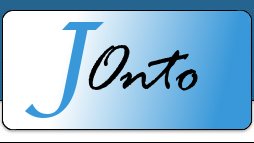|
One of the main features of classic libraries which was inherited by the Semantic Digital
Libraries is describing resources with various metadata. Many different types of Knowledge
Organization Systems are used to perform this task - ranging from controlled vocabularies
and taxonomies to semantic nets and ontologies. JOnto project was carried out to make this
process easier, as far as taxonomies are concerned. It allows users to select some desired
annotations from classification schemata like WordNet, DMoz, DDC and PKT or write them
manually, and use them to describe a specific resource. All work is done using simple and
clear AJAX-based web interface.
However, the important drawback of this solution is that there is no support for swift
taxonomy to taxonomy transition or conversion. This means that a resource has to be
described independently in each taxonomy, even if the concepts taken from them are very
similar. It makes a work with JOnto pretty uncomfortable.
Another disadvantage is not exploiting the whole potential of user community. Great success
of so called Web 2.0 realized everyone that the future belongs to the software which is
community-aware above all. To respond to this trend, digital libraries introduced an idea of
Semantic Social Collaborative Filtering (SSCF). It,s foundation is to treat each user not like a
consumer of the content delivered, but rather as one of its creators. SSCF enable users to
annotate and evaluate resources and assign them to previously created bookmarks, as well as
exchange these bookmarks with their friends. Then it utilizes this user created content, for
example, to enhance searching effectiveness.
Both, allowing conversions between different taxonomies and enhancing user engagement in
work with JOnto, are the basis of the master thesis written at Gdansk University of
Technology entitled Collaborative Building of Controlled Vocabulary Crosswalks. First task
of it would be extending JOnto with various controlled vocabularies, apart from those already
implemented. Then a testing environment should be set to collect large amount of data from
the community, i.e. users annotations. Apparently the best way to resolve the problem with
conversions between taxonomies is to create a proper algorithm based on user delivered data.
The reason is that similar contents will be described by equivalent concepts taken from
different taxonomies. The more annotations collected, the more precise the result of this
association will be.
After implementing the conversion algorithm in JOnto it will be possible to include
interesting and useful additional functionalities. Most of all - automated suggestions of
concepts similar to those just typed (from the same or different taxonomies). Another
improvement would be autocompletion of typed words based either on WordNet or on
annotations written by the user (possibly also his friends) so far.
As you could realize from this paper, the process of annotating resources in digital libraries,
although very important, still can be improved in many fields. Referenced master thesis is
assumed to solve as least some of them.
|







